
JP Journal of Biostatistics
Scope & Guideline
Shaping the Future of Biostatistics, One Study at a Time
Introduction
Aims and Scopes
- Biostatistical Methodologies:
The journal emphasizes the development and application of new statistical methods specifically tailored for biomedical research, including predictive modeling, survival analysis, and multivariate techniques. - Epidemiological Studies:
There is a strong focus on epidemiological research, utilizing statistical analysis to understand disease patterns, risk factors, and public health implications. - Machine Learning and Advanced Analytics:
The journal explores the integration of machine learning and artificial intelligence in biostatistics, enhancing predictive accuracy and data interpretation in health-related studies. - Public Health Research:
A significant aim is to address public health challenges through statistical analysis, providing insights into health trends, disease outbreaks, and healthcare system performance. - Application of Statistical Models in Medical Research:
The journal publishes studies that implement statistical models to analyze medical data, assess treatment efficacy, and understand patient outcomes.
Trending and Emerging
- Machine Learning Applications:
A significant increase in the application of machine learning techniques for health data analysis is evident, showcasing the journal's adaptation to technological advancements in data science. - Impact of COVID-19 on Health and Society:
Research addressing the effects of the COVID-19 pandemic on various health metrics and societal behaviors has surged, reflecting the ongoing relevance of this global health crisis. - Health Data Analytics:
There is a growing trend towards utilizing big data analytics in health research, focusing on large-scale datasets to derive insights into public health issues and healthcare efficiencies. - Neutrosophic and Fuzzy Logic Approaches:
Emerging methodologies, including neutrosophic analysis and fuzzy logic, are gaining traction in the journal, indicating a shift towards handling uncertainty and imprecision in health data. - Patient-Centric Research:
An increasing emphasis on studies that analyze patient experiences and outcomes, particularly in chronic diseases, reflects a trend towards more personalized and patient-centered healthcare research.
Declining or Waning
- Traditional Statistical Techniques:
There seems to be a reduction in the publication of studies employing traditional statistical methods without integration of modern computational techniques, as the field increasingly leans towards more complex methodologies. - Focus on Non-Parametric Methods:
The frequency of studies focusing solely on non-parametric statistical methods appears to be waning, potentially as researchers favor parametric approaches that leverage larger datasets. - Basic Epidemiological Models:
Research centered on basic epidemiological models without incorporating advanced analytical techniques is becoming less common, indicating a shift towards more sophisticated modeling approaches. - Descriptive Studies without Analytical Depth:
There is a noticeable decline in purely descriptive studies that do not employ rigorous statistical analysis or modeling, as the journal's audience seeks more in-depth statistical insights.
Similar Journals
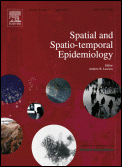
Spatial and Spatio-Temporal Epidemiology
Mapping Health: Where Space Meets TimeSpatial and Spatio-Temporal Epidemiology is a premier journal dedicated to advancing the understanding of spatial patterns and temporal dynamics in epidemiological research. Published by ELSEVIER SCI LTD in the United Kingdom, this journal utilizes a robust interdisciplinary approach, blending methodologies from epidemiology, geography, and environmental science. With an impressive impact factor and categorized in the top quartiles for its fields—Q2 in Epidemiology and Q1 in Geography, Planning and Development (2023)—this journal excels in providing high-quality insights relevant to both academic researchers and public health professionals. The journal supports open access options, enhancing the dissemination and impact of scholarly articles. Since its inception in 2009, Spatial and Spatio-Temporal Epidemiology has published a myriad of studies that contribute significantly to understanding the geographical and temporal aspects of diseases, thereby serving as a crucial resource for anyone invested in improving public health outcomes and addressing infectious diseases globally.
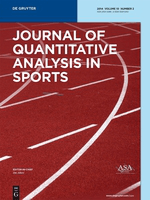
Journal of Quantitative Analysis in Sports
Innovating performance analysis for a competitive edge.The Journal of Quantitative Analysis in Sports is a premier academic platform dedicated to advancing the field of sports analytics through rigorous quantitative research. Published by WALTER DE GRUYTER GMBH in Germany, the journal boasts an impact factor that places it firmly within the realms of innovation, with 2023 rankings reflecting a Q2 in Decision Sciences and a distinguished Q1 in Social Sciences. This makes it an essential resource for researchers and practitioners alike, offering insights into quantitative methodologies applicable to the sports domain. Focusing on topics ranging from performance analysis to predictive modeling, the journal encourages submissions that push the boundaries of existing knowledge and foster interdisciplinary collaboration. For those committed to the evolution of sports analytics, the Journal of Quantitative Analysis in Sports serves as a vital source of high-quality research and thought leadership.
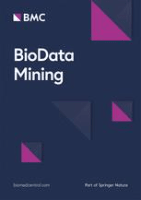
BioData Mining
Advancing Knowledge at the Intersection of Biology and TechnologyBioData Mining is a distinguished open access journal published by BMC, focusing on the dynamic intersection of bioinformatics, computational mathematics, and molecular biology. Since its inception in 2008, this journal has provided a critical platform for researchers and professionals to publish their findings, contributing significantly to the collective knowledge in fields such as biochemistry, computational theory, and genetics. With a robust impact factor and a commendable h-index, BioData Mining continues to be a vital resource for academic and industrial advancements, ranked in the top quartiles in various categories according to the 2023 metrics. The journal's commitment to open access ensures that cutting-edge research is readily available to the global scientific community, thereby enhancing visibility and fostering collaboration among scholars. Whether you are a researcher, student, or practitioner, engaging with BioData Mining will equip you with relevant insights and developments in the fast-evolving realm of bioinformatics.

Japanese Journal of Statistics and Data Science
Advancing the Frontiers of Statistics and Data ScienceJapanese Journal of Statistics and Data Science, published by SPRINGERNATURE, is a leading academic journal dedicated to the advancement of statistical methodologies and data science applications, with a focus on fostering innovative research and discourse within the field. Since its inception in 2018, the journal has sought to bridge theory and practice, embracing emerging trends and interdisciplinary approaches that contribute to the ever-evolving landscape of statistics, probability, and computational theory. Hailing from Germany, the journal holds an impressive Q3 ranking in both Computational Theory and Mathematics and Statistics and Probability, reflecting its commitment to high-quality, impactful research. With an accessible ISSN of 2520-8756 and E-ISSN 2520-8764, the journal invites a global audience of researchers, professionals, and students to explore its rich array of articles and findings, all aimed at furthering knowledge and application in the realm of data science.
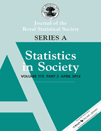
JOURNAL OF THE ROYAL STATISTICAL SOCIETY SERIES A-STATISTICS IN SOCIETY
Innovating Methodologies for Real-World ApplicationsJournal of the Royal Statistical Society Series A - Statistics in Society is a premier academic journal published by Oxford University Press, dedicated to advancing the understanding and application of statistical methods in the context of social issues. With an ISSN of 0964-1998 and an E-ISSN of 1467-985X, this journal has consistently been recognized for its high-quality contributions, reflected in its prestigious impact factors and quartile rankings. As of 2023, it holds a Q1 status in Social Sciences (miscellaneous) and notable Q2 rankings in Economics and Econometrics, as well as in Statistics and Probability, illustrating its influence and authority in the relevant fields. Researchers and professionals engaging with this journal can expect rigorous peer-reviewed articles, innovative methodologies, and comprehensive discussions that address contemporary statistical challenges within society. While currently not offering Open Access, the journal is committed to disseminating knowledge that enhances understanding of the interplay between statistics and social dynamics. Spanning from 1988 to 2024, the Journal of the Royal Statistical Society Series A remains a crucial resource for scholars looking to explore the vital intersection of statistical theory and societal applications.

Intelligent Medicine
Empowering global collaboration in health informatics.Intelligent Medicine, published by Elsevier, is a leading open-access journal dedicated to advancing the fields of Artificial Intelligence, Biomedical Engineering, Health Informatics, and related areas within Medicine. Since its inception in 2021, it has quickly established itself among the top tier of academic publications, holding a commendable Q2 ranking in several categories, including a rank of #51 in Health Informatics and #104 in Medicine (Miscellaneous) as of 2023. The journal aims to disseminate innovative research that harnesses AI technologies to improve healthcare outcomes, bridging the gap between cutting-edge technology and medical practice. With its open-access model, Intelligent Medicine ensures broad dissemination of research findings, facilitating collaboration and knowledge sharing among researchers, practitioners, and students globally. Located in Amsterdam, Netherlands, this journal plays a pivotal role in shaping the future of intelligent healthcare solutions, inviting submissions that push the boundaries of conventional medicine through creative and impactful research.

JOURNAL OF AGRICULTURAL BIOLOGICAL AND ENVIRONMENTAL STATISTICS
Bridging Disciplines with Rigorous Statistical AnalysisJOURNAL OF AGRICULTURAL BIOLOGICAL AND ENVIRONMENTAL STATISTICS, published by SPRINGER, serves as a vital platform for advancing knowledge in the quantitative study of agricultural, biological, and environmental phenomena. With an ISSN of 1085-7117 and an impressive e-ISSN of 1537-2693, this journal encompasses a broad scope of research that applies statistical methodologies to address complex challenges within the field. Operating out of the United States, the journal demonstrates its academic rigor and relevance, evidenced by its Q2 rankings across multiple categories in 2023, including Agricultural and Biological Sciences, Applied Mathematics, and Environmental Science. Researchers and practitioners in these fields will find significant value in the journal’s focus on integrating statistical techniques and innovative analyses, fostering interdisciplinary collaboration. Published continuously since 1996, it remains committed to publishing high-quality articles that not only contribute to theoretical advancements but also offer practical solutions, thereby enhancing the understanding of critical issues in agriculture, biology, and environmental science.

BIOMETRICS
Connecting Disciplines Through Exceptional ResearchBIOMETRICS, published by WILEY, stands as a prestigious journal that has made substantial contributions across diverse fields, including Agricultural and Biological Sciences, Applied Mathematics, and Biochemistry. With an impressive track record from its inception in 1946 and continuing through to 2024, this journal is recognized for its rigorous peer-reviewed research and high-impact findings, evidenced by its Q1 ranking in various categories such as Medicine and Statistics. Researchers and professionals alike will find a wealth of knowledge within its pages, making it an essential resource for anyone involved in these dynamic and evolving disciplines. While BIOMETRICS does not offer open access, its reputation for delivering high-quality research ensures its continued importance in advancing the scientific ecosystem. For those seeking to stay ahead in their fields, engaging with the latest studies published in this journal is indispensable.
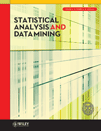
Statistical Analysis and Data Mining
Exploring the Intersection of Statistics and Data MiningStatistical Analysis and Data Mining is a leading journal published by WILEY, dedicated to exploring the latest advancements in statistical methods and data mining techniques. With an ISSN of 1932-1864 and an E-ISSN of 1932-1872, this journal serves as a significant platform for researchers and professionals in statistical analysis, computer science applications, and information systems. Covering a wide range of topics from innovative analytical methodologies to emerging data mining algorithms, the journal aims to disseminate high-quality research that contributes to the evolving landscape of data science. Ranked in the Q2 category for the fields of Analysis, Computer Science Applications, and Information Systems in 2023, it emphasizes its relevance and impact within academia. While it offers limited Open Access options, the insights shared in this publication are integral for those wishing to stay ahead in fast-paced research and data-driven industries. Since its inception in 2008 and continuing through 2024, Statistical Analysis and Data Mining invites submissions that reflect rigorous empirical research coupled with practical implications, making it a vital resource for the academic community.

International Journal of Biostatistics
Transforming Data into Health Solutions.The International Journal of Biostatistics, published by Walter de Gruyter GmbH, stands as a critical platform for advancements in the fields of biostatistics and applied statistics in medicine. With an ISSN of 2194-573X and an E-ISSN of 1557-4679, this journal has gained recognition for its rigorous peer-reviewed articles that bridge theoretical statistics and its practical applications in health sciences, maintaining a commendable Q2 quartile ranking in both Medicine and Statistics categories as of 2023. Hosted in Germany, the journal's pivotal role lies in disseminating innovative research findings that guide public health decisions and inform healthcare policy, thus appealing to a diverse readership including researchers, healthcare professionals, and students. Although the journal operates under a subscription model, it remains committed to providing valuable insights into the statistical methods that support evidence-based medicine and improve health outcomes globally. For those engaged in the evolving landscape of biostatistics, the International Journal of Biostatistics serves as an indispensable resource through its comprehensive coverage from 2005 to 2024.